As regular readers of these pages will know, there’s a bit of a split appearing in the ebike world. On the one side, there are bikes which promise a diet eMTB experience, with small batteries and inconspicuous motors that deliver a gentle push of power rather than the full surge. On the other, you’ve got full-fat ebikes, which are designed to whisk you up the fire road to the top of your nearest steep and techy trails, absorb all sorts of punishment on the way down, and then repeat until your arms feel like breadsticks. Guess which category the Ariel 50E Elite fits in to?

The previous incarnation of the Ariel E was very much a first generation ebike, with an external battery and a frame that stayed as close as possible to the look of the regular Ariel. The Ariel 50E has a radically different frame design from Saracen’s non-assisted models, but carries over all the same geometry and features.
The bike
The Ariel 50E Elite starts with a neat alloy frame sporting some nice clean lines. The primer grey colour won’t prompt any excited fondling of your bike in the car park, but nor will it clash with your riding kit. Cable routing is mostly internal apart from a fairly long exposed section of rear brake hose. The controller and display wiring is external, making cockpit swaps easy. There’s a rubber chainstay protector but Saracen have otherwise been tastefully restrained in the frame armour department.
The angles and sizing are what you’d expect from a full chat enduro bike, with a 65 degree head angle and a 76 degree seat tube. Reach on the size large is a rangey 505mm – about as long as mainstream bike companies are daring to push things out to. Suspension is a linkage-actuated single pivot design that originally began life on Saracen’s Myst downhill bike The small and medium sizes roll on a 29/27.5 reverse mullet wheel setup, while the large and XL are full 29ers. The bike also ships with a spare suspension link, so you can experiment with different wheel sizes while keeping the same geometry.

Speaking of shipping, Saracen have now joined the growing number of direct sales bike companies in in the UK. In Europe you can still pick one up from their dealer network. There are pros and cons to buying a bike direct from the manufacturer, but the main benefit is value for money, and the Ariel 50E might be a whole lot of cash, but it’s also a whole lot of bike.
For starters you get Shimano’s latest EP8 assist system, which adds torque and saves weight over the older E7000 system found on the base model Ariel 50E. This is paired with an integrated 504Wh Shimano battery – not as huge as some, but enough for an all-dayer if you use Trail and Boost mode sparingly. The battery locks into the down tube for extra security and has a tough composite cover. There’s a void in the frame in front of the motor that has been left open deliberately to aid with cooling and moisture dispersal. It’s not particularly pretty but you can’t see it unless you turn the bike upside down.
The suspension is from Fox’s Factory range and pairs a 160mm Fox 38-E Factory fork with a Fox DHX2 Factory rear shock to produce 150mm. The large Ariel 50E comes with a 450lb shock spring, which was fine for me at my bodyweight of 175lbs or so. The new Fox Factory range has standardised adjustments so that your fork and shock have the same number of clicks for rebound and compression damping – good news for anyone who’s afraid of fiddling with their suspension. This version of the DHX2 shock also has a climb switch, although I’ll be honest and say I didn’t actually realise this until the test period was over.
The Ariel 50E was produced a couple of months too soon for Shimano’s new Linkglide eMTB drivetrains, so it uses trusty Deore XT 12-speed – as good as conventional gears get. It’s been paired with a regular XT cassette, but thankfully the one on our test bike is showing very little wear, even after nearly 500 miles. Shimano’s 4-piston XT brakes combined with 203mm rotors promise more than enough stopping power, even at a full bike weight of nearly 25kg.
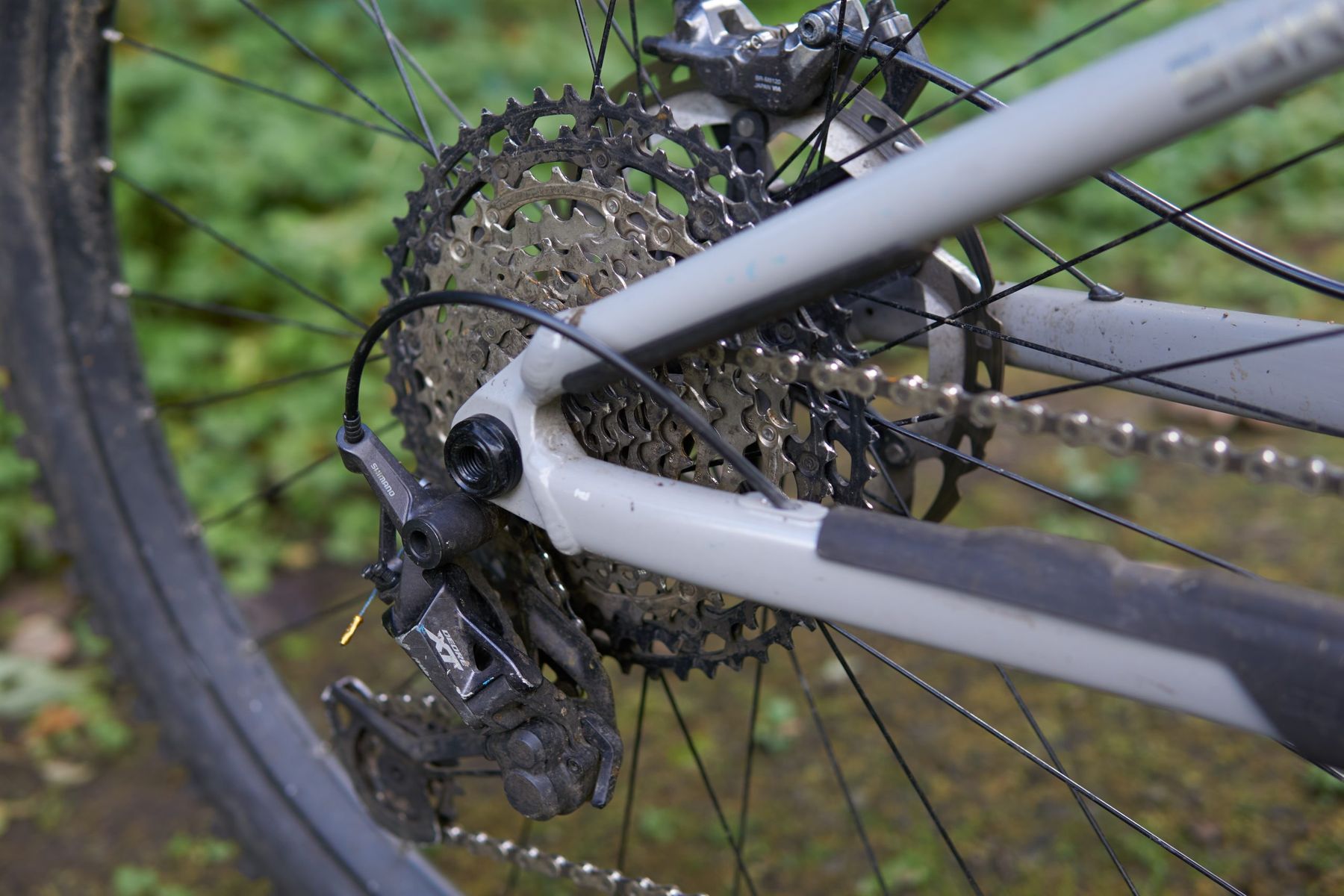
The wheels pair Shimano XT hubs with DT Swiss’s ebike-specific HX531 rims. These have a 30mm inner width and a deep section that hints at a decent amount of strength. Tyres are a safe choice of Maxxis Minion DHRII in 29×2.4 width front and rear, albeit with a standard EXO casing. Our test bike also arrived with inner tubes. I set it up tubeless ASAP and also popped an insert into the rear tyre.
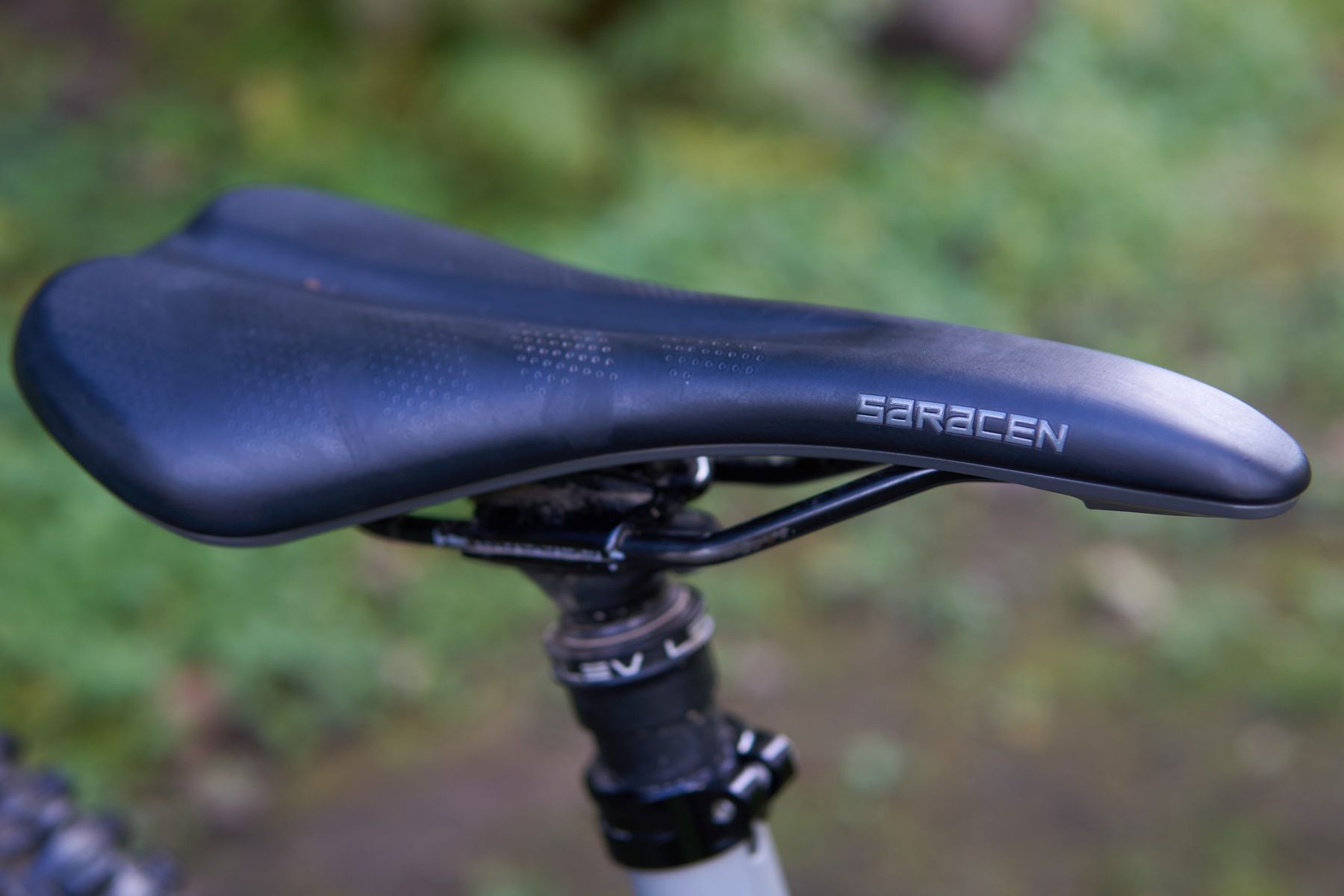
The finishing kit is appropriately nice, without being outrageous: a Saracen branded saddle on a KS Lev 150mm dropper post with an under-bar lever, and ODI Elite Motion lock-on grips (basically the same pattern as the venerable Ruffian BMX grip) on a 35mm diameter Race Face Turbine R handlebar.
The ride
The ride of the Ariel 50E doesn’t throw up any huge surprises. It’s an unapologetically burly long travel ebike, and it really handles like one. As previously mentioned, the Ariel 50E’s frame is long. At 5’10, I’m probably a bit short for a size large, and at times I felt like a passenger, yet the bike’s geometry and the formidable suspension got me down anything I pointed it at safely.
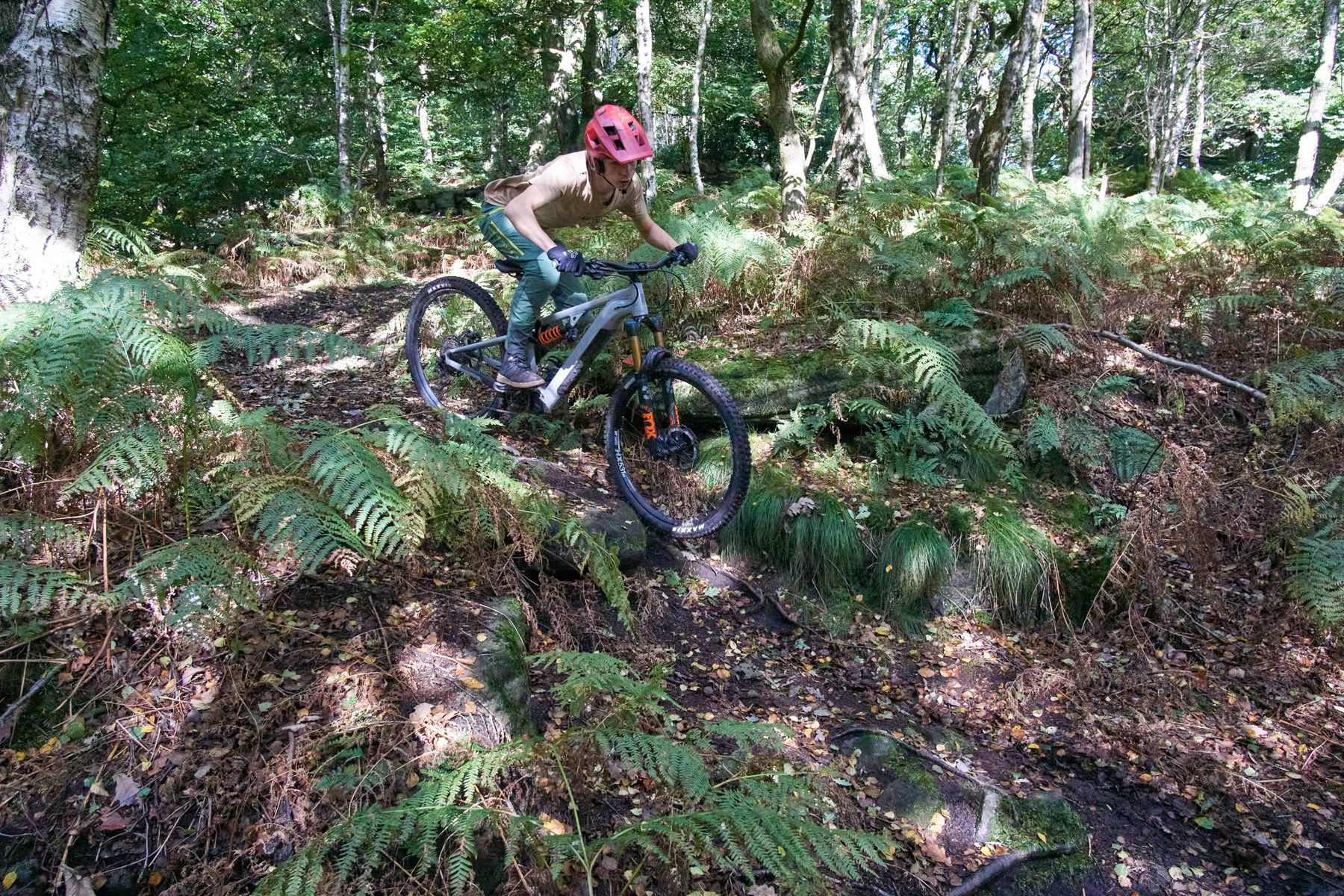
In the hands of a skilful rider, it’s capable of sailing through some really ugly lines without flinching. The Fox 38 fork is an excellent match for the bike – so supple, you can start it moving through its travel with a push from one finger, yet also seemingly impossible to bottom out. The DHX2 at the rear isn’t quite as unflappable, but it’s easily on a par with the best air shocks I’ve ridden.
Climbing on the Ariel 50E is surprisingly easy given the bike’s obvious proclivity for downhill. The rear shock gives great traction without any of the wallowy feel of old skool coil suspension, and the steep seat angle puts you in a nice neutral body position. For more dynamic climbs, a shorter frame would suit me better, but even on those you can use brute force rather than finesse to get up without a dab.
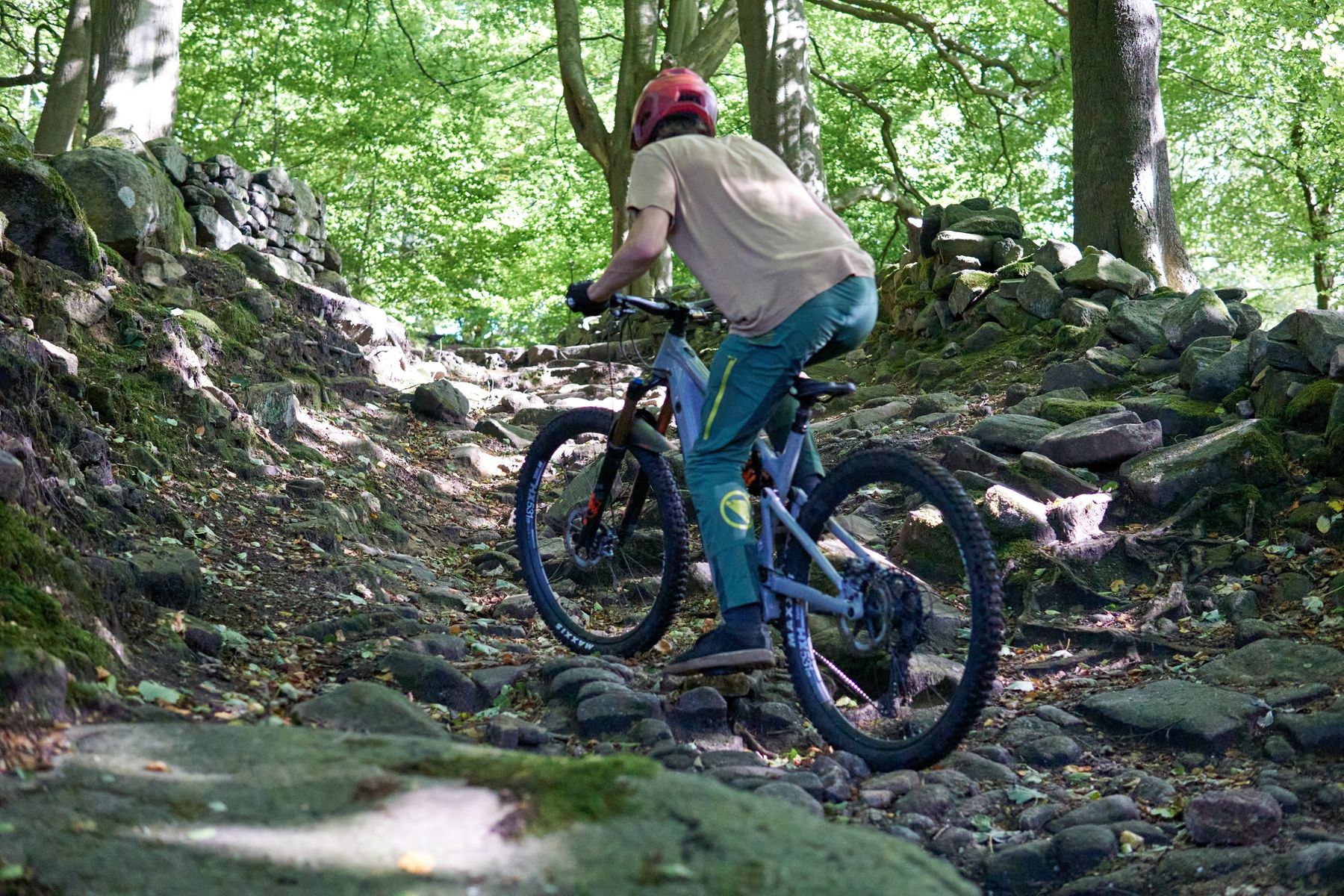
I don’t really know what I can write about the Maxxis Minion tyres that hasn’t already been written. Even though they’re a venerable design, they’re excellent in everything that isn’t ultra-steep slop. I would liked to have seen a tougher Exo+ or DoubleDown casing on the rear and possibly the front as well, as even with a pre-emptive tyre insert installed, there were still a couple of leaky moments. Both of these were the result of launching into rock gardens with some abandon, but that’s the kind of thing this bike is intended for.
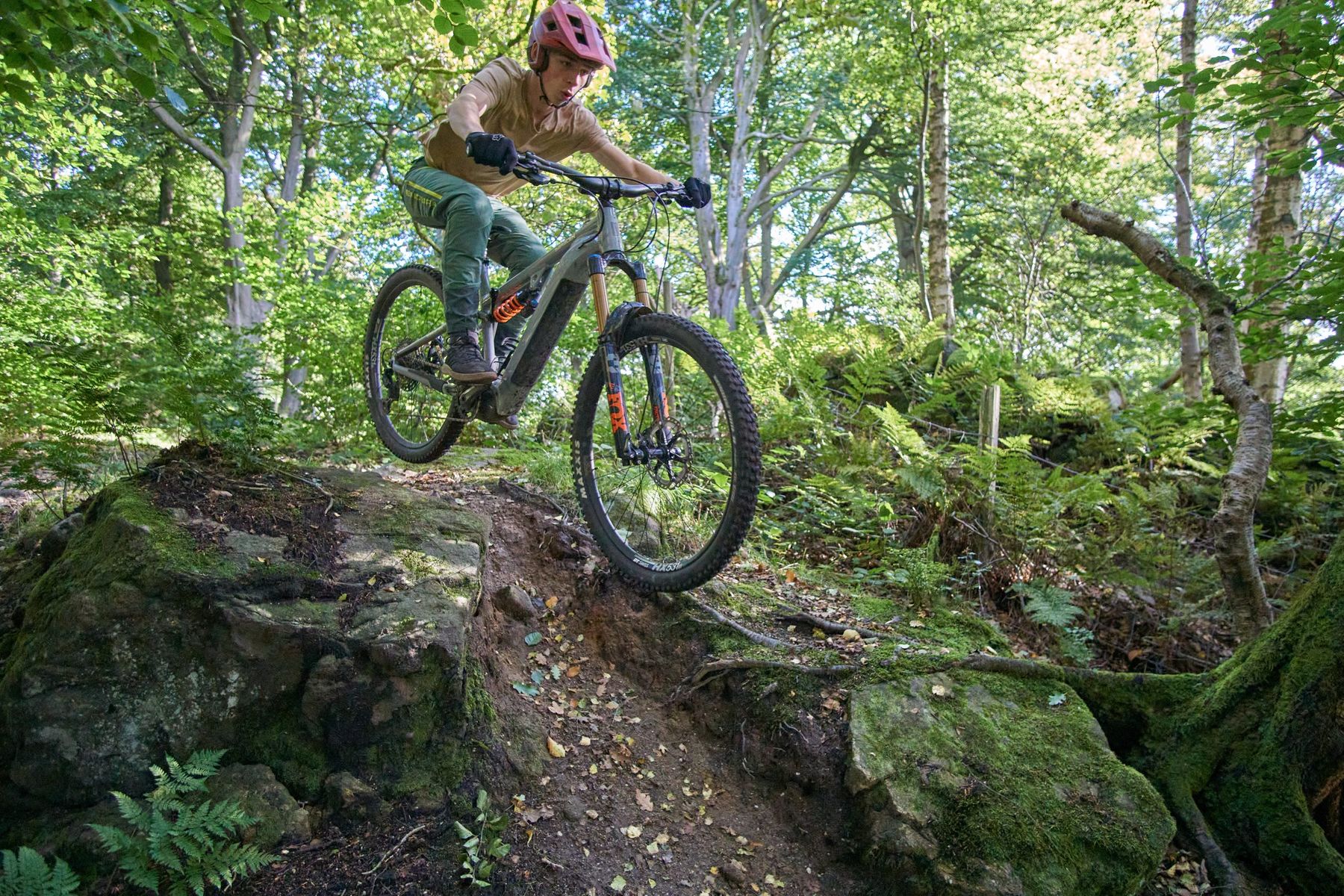
The Ariel 50E’s Shimano EP8 motor has been covered in detail by Andi before, and it’s an improvement over its predecessors in almost every respect – except one. When freewheeling there’s a slight rattle from behind the crank. It’s probably louder on the Ariel 50E because of the aforementioned gap in the frame next to the motor, and unfortunately, there doesn’t seem to be much you can do about it. Other than that, the EP8 is a great little unit. The original STEPS assist was very good at delivering power smoothly, and the EP8 motor is probably even better. Range wasn’t spectacular, but I kept the bike in Trail most rides when greater use of Eco would probably have been more sensible.
One minor point about this build of the Ariel 50E is that the stiffness of the fork, the 35mm carbon bars and the thin grips add up to a fairly unforgiving front end. If you’re used to smashing out chairlift runs all summer, it won’t bother you, but I found myself wanting a touch more comfort on longer rides.
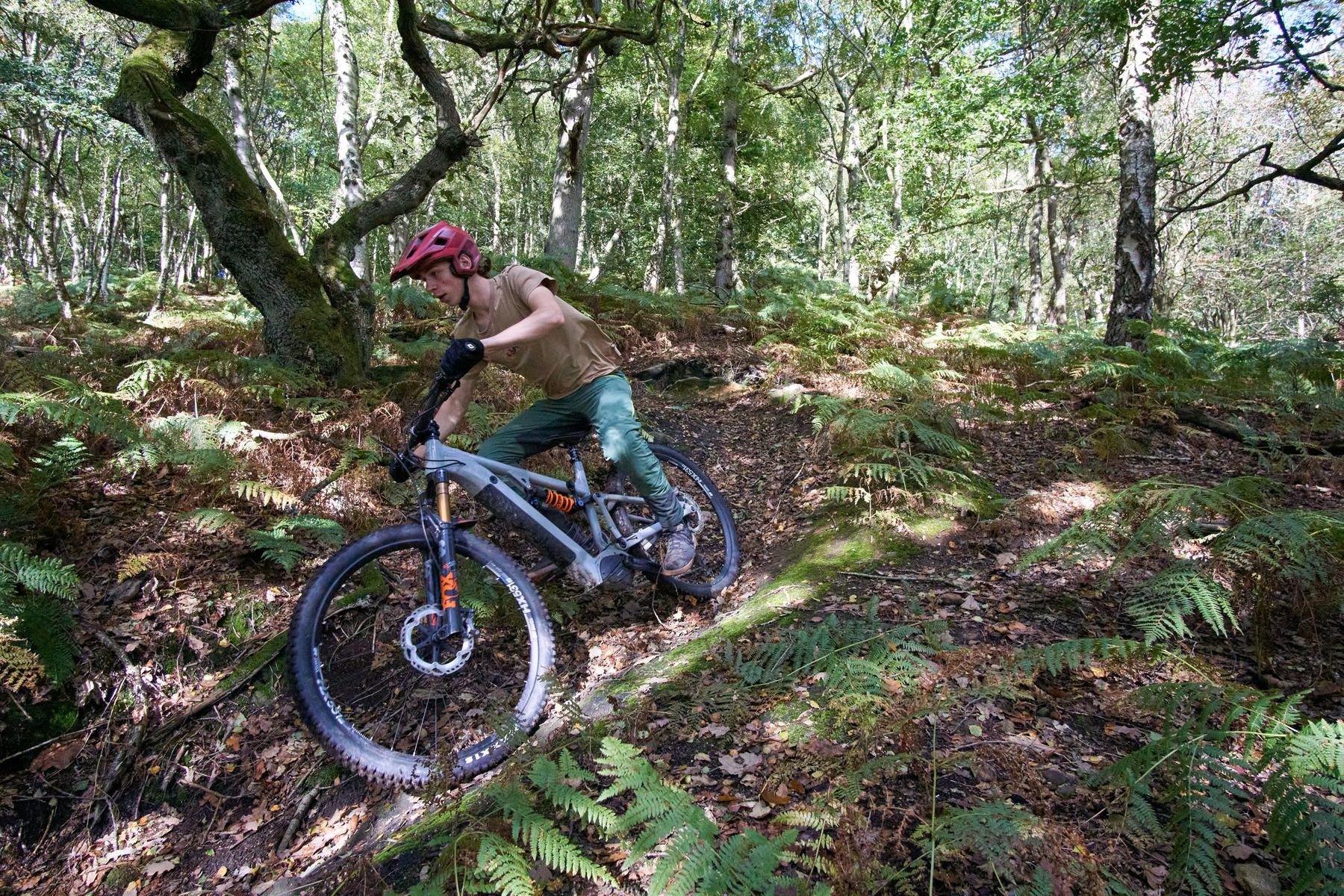
Durability notes
Our particular Ariel 50E seemed to have more than its fair share of issues, although these were probably caused by the last year’s general turmoil in the bike industry as much as anything at the manufacturing or assembly process.
The rear shock initially leaked oil: this was quickly sorted under warranty as you’d expect. The rear hub also started emitting some strange noises, and on removing the freehub it transpired that a little plastic carrier behind it had disintegrated into Kinder Surprise components. Removing the loose bits from the hub didn’t seem to affect its operation, but it stills creaks loudly from time to time, and I’d probably look to replace the broken part if a review deadline wasn’t looming.
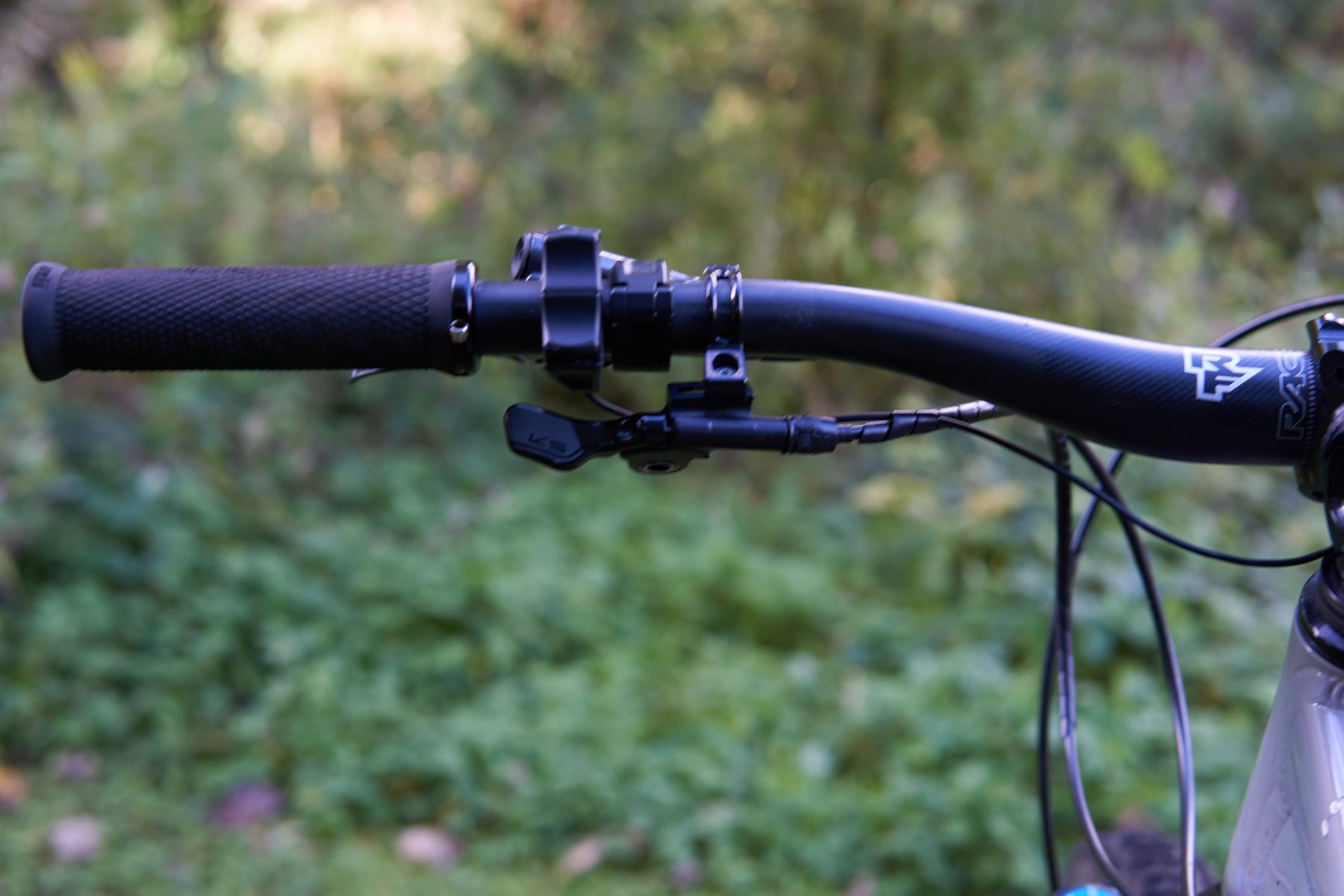
The KS Lev seatpost also proved somewhat fussy to set up, and after a few rides it began sinking whenever it was sat on. I managed to kink the cable while trying to adjust it, then fitted a new one (which really requires a special guide tool that I didn’t have available). After doing all that, I found that the soft plastic barrel adjuster at the lever was too stiff to turn by hand, so I ended up mangling it slightly with a pair of pliers. I have no complaints about the performance of the post itself, but I’d rather it was a little easier to live with.
Things Things I Loved
- This is a ridiculously capable bike on anything technical, steep and choppy.
- The climbing performance is great too.
- It’s not cheap, but it’s good value.
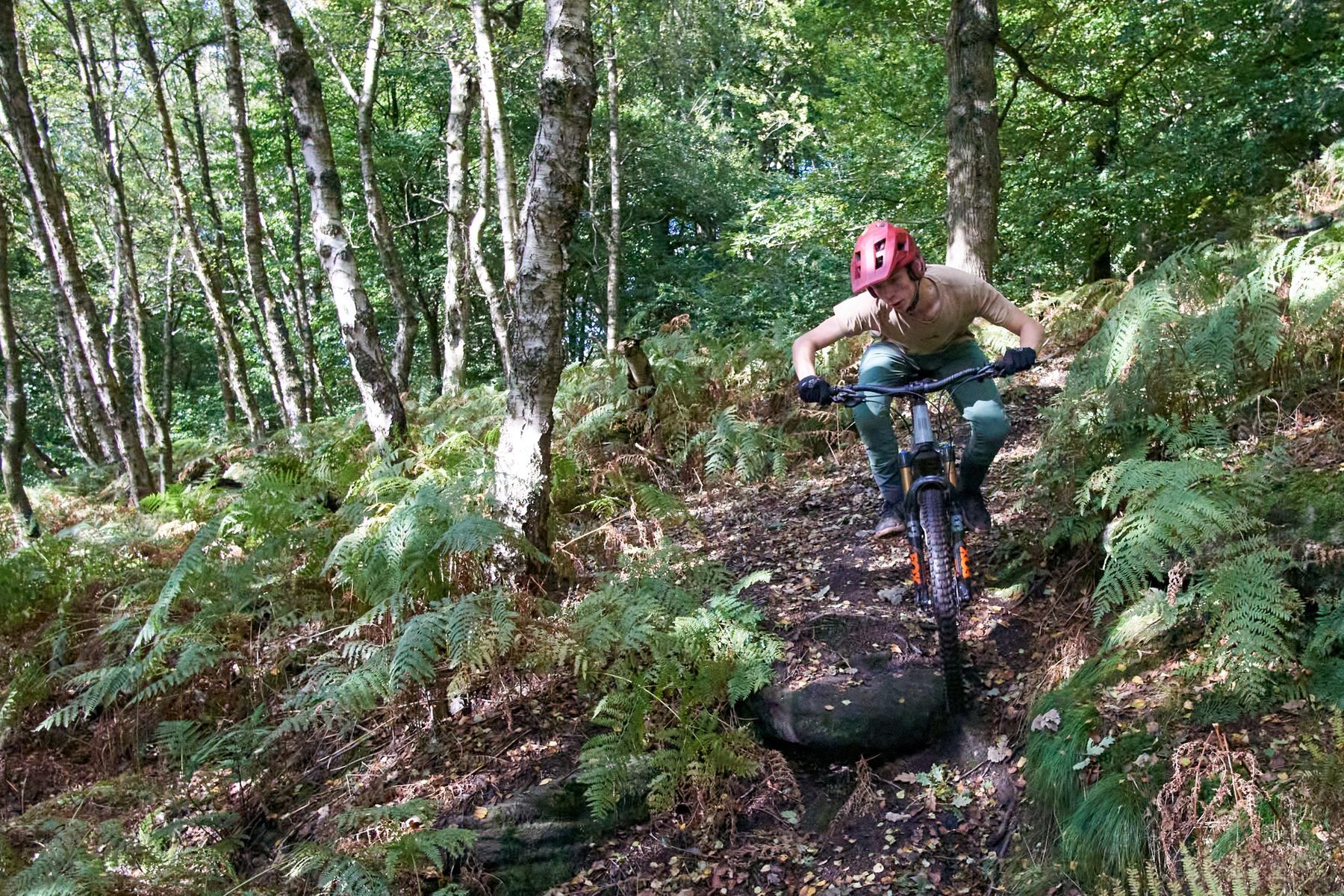
Three Things I’d Change
- It’s a very long frame – size down if in doubt.
- The tyres need to be tougher, and tubeless.
- The front end is stiff, bordering on punishing – some 31.8mm bars and fatter grips might make all-day rides more comfortable.
Overall
Saracen doesn’t field a race team in the Enduro World Series, but the brand is very much present at the sharp end of downhill racing. That might explain why the Ariel 50E feels more like a downhill bike than a trail bike. Its plush, bottomless suspension, huge reach and noticeable weight mean it takes some pretty extreme terrain to get the best out of it, and riding it on tamer stuff can feel like a bit of a waste.
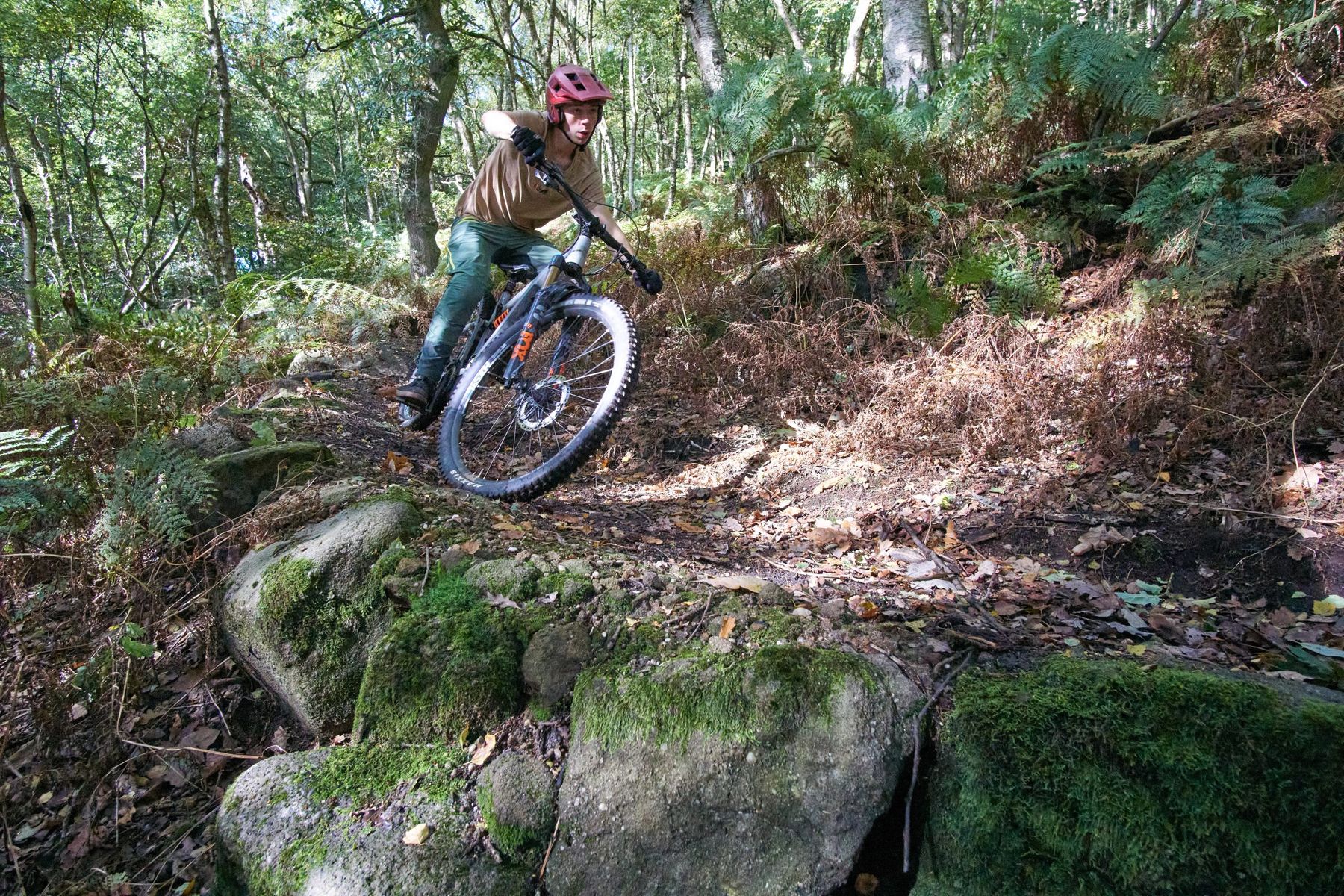
If you have the right trails to ride it on though, I can see it being an amazing training tool for anyone who wants to get some serious descending miles in. I’ve used it for self-uplift action, but also for trail maintenance, quick fitness rides after the kids have gone to bed, and even ferried my daughter around on it. It’s worked well for all of these, but really it’s a bike for the fast boys and girls who want to get even faster.
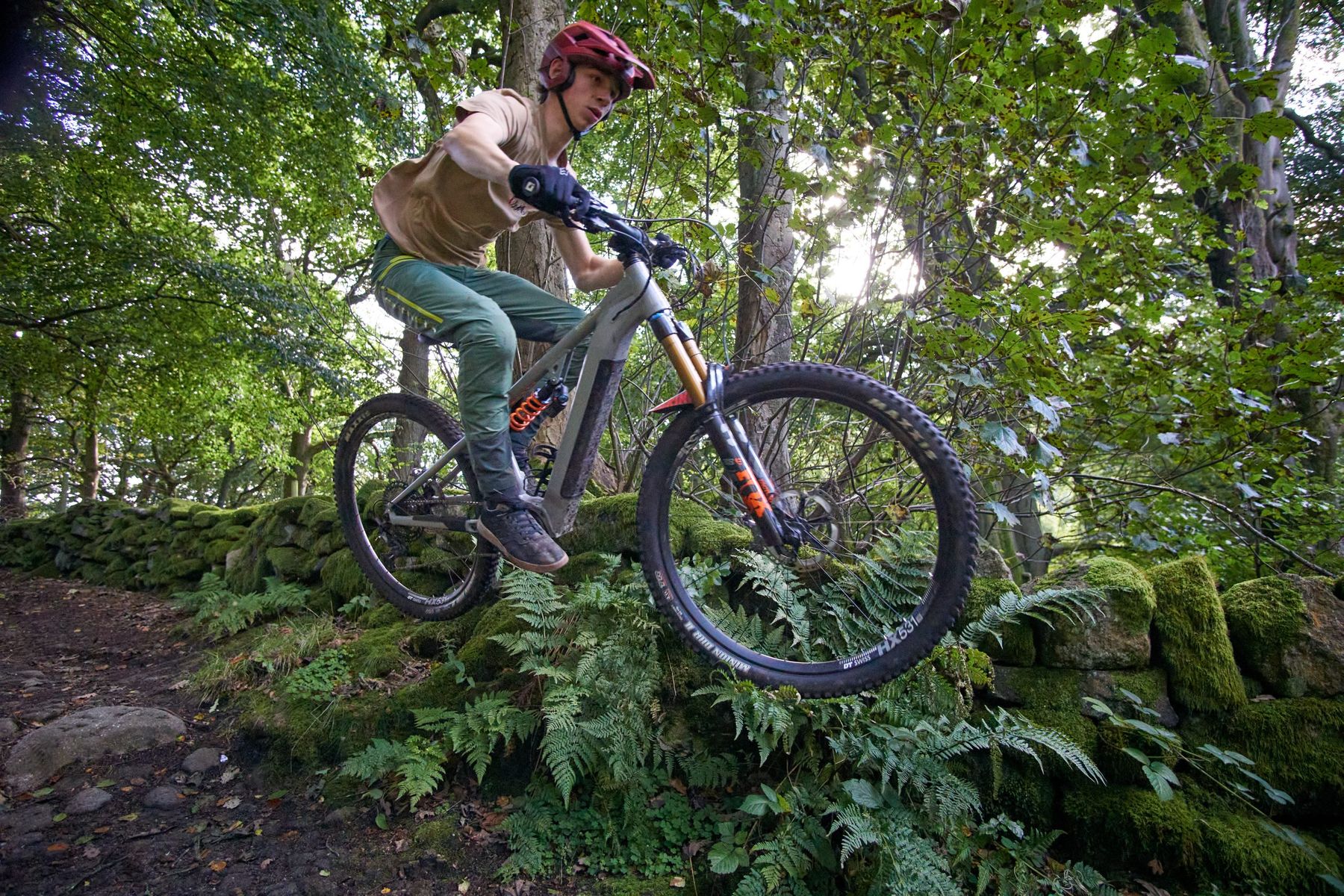
- Frame: Series 3 Custom Butted 6013 Aluminium, 150mm travel
- Fork: Fox 38 E-Factory, 160mm travel, 44mm offset
- Headset: Prestine PT-F13
- Stem: RaceFace Turbine R 35mm
- Bars: RaceFace Next R Carbon, 35x780mm
- Grips: ODI Elite Motion
- Seatpost: KS Lev Integra 150mm travel (125mm on Small frames)
- Brakes: Shimano XT BR-M8120, 203mm rotors
- Rear Mech: Shimano XT 12spd
- Shifter: Shimano XT M8100
- Cassette: Shimano XT M8100 10-51T 12spd
- BB: n/a
- Chainset: Shimano FC-M8150 34T 165mm
- Chain: KMC 12spd
- Wheelset: DT Swiss HX531 32H on Shimano SLX hubs
- Tyres: Maxxis Minion DHRII EXO TR 29 x 2.4
- Price: £6499

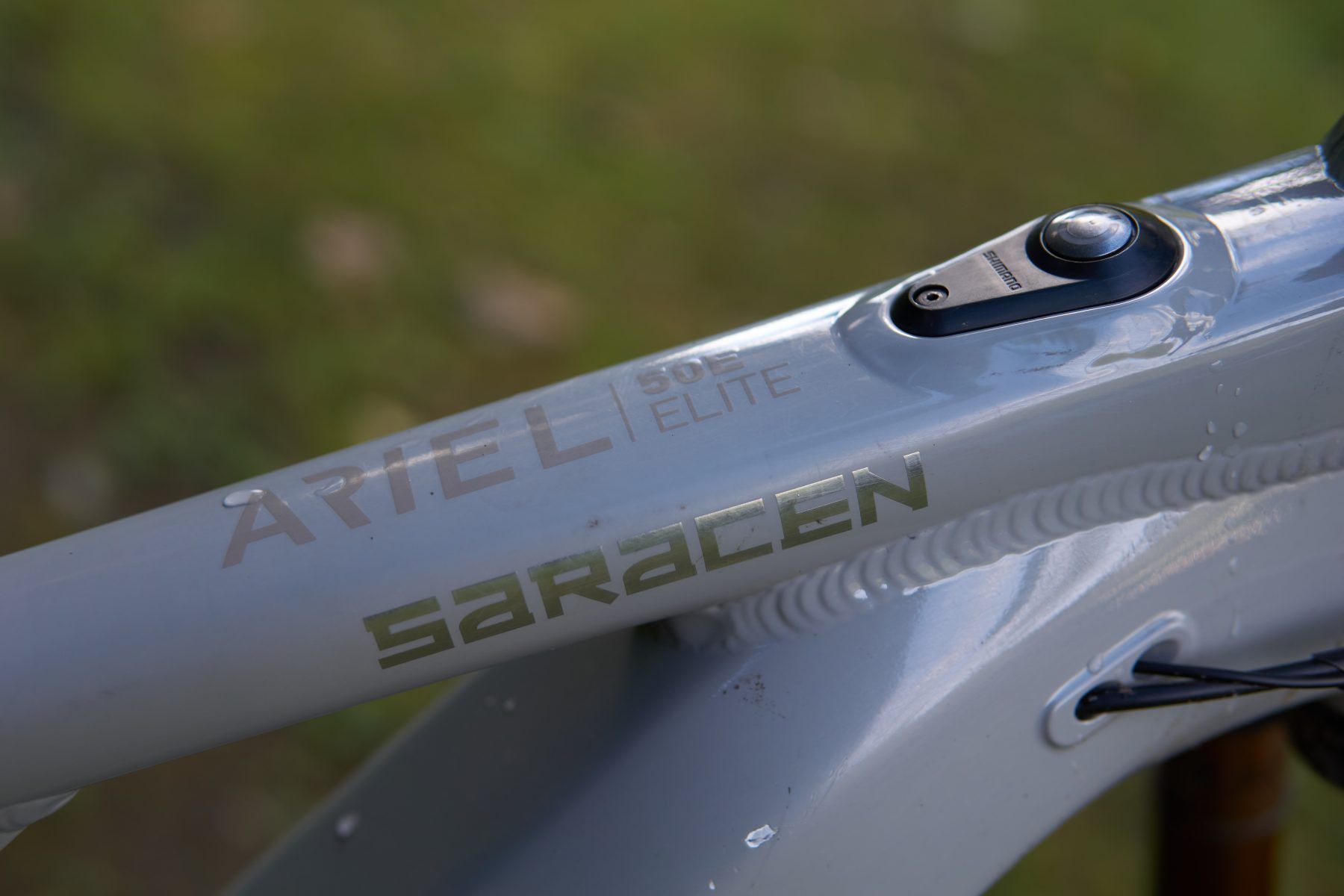




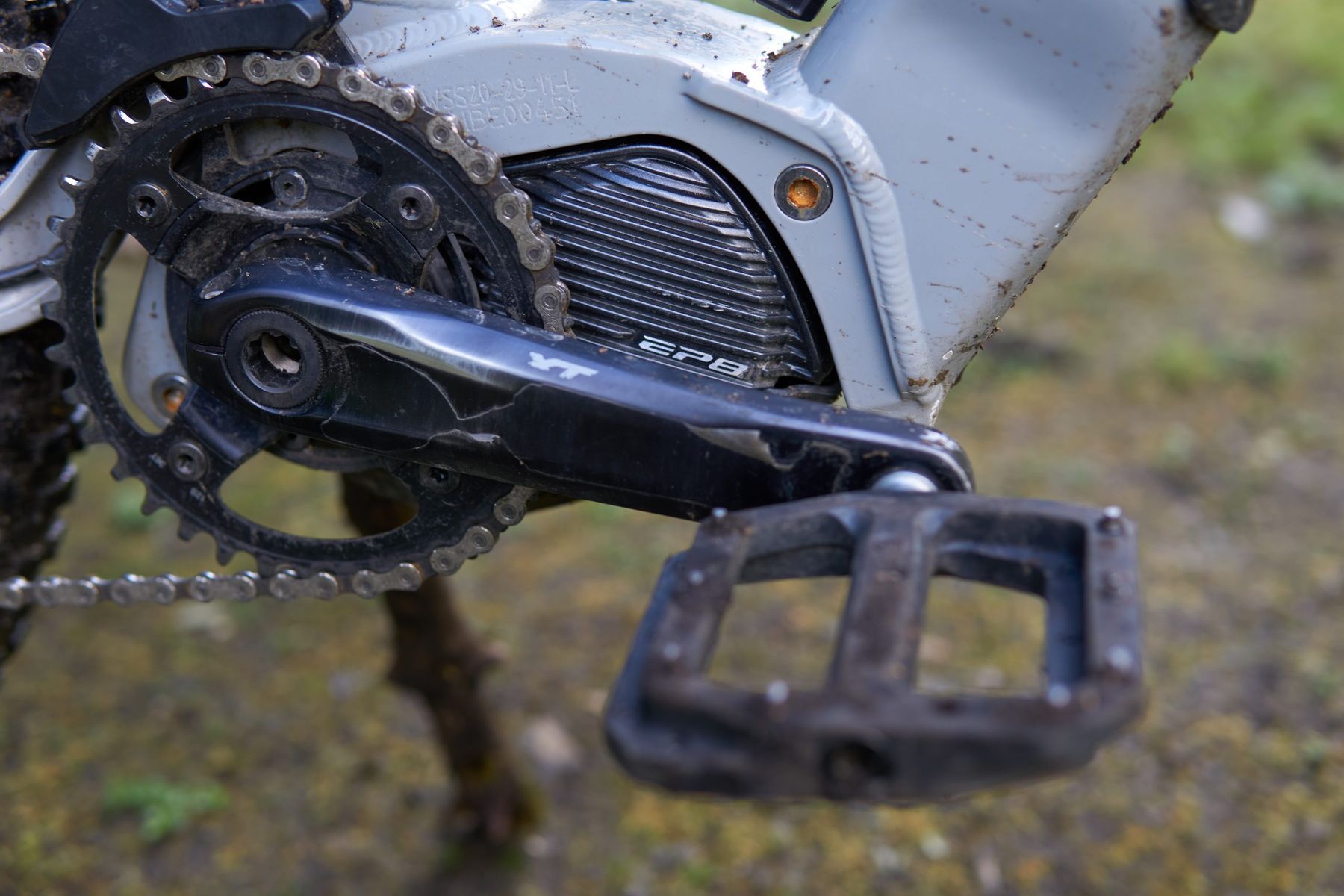
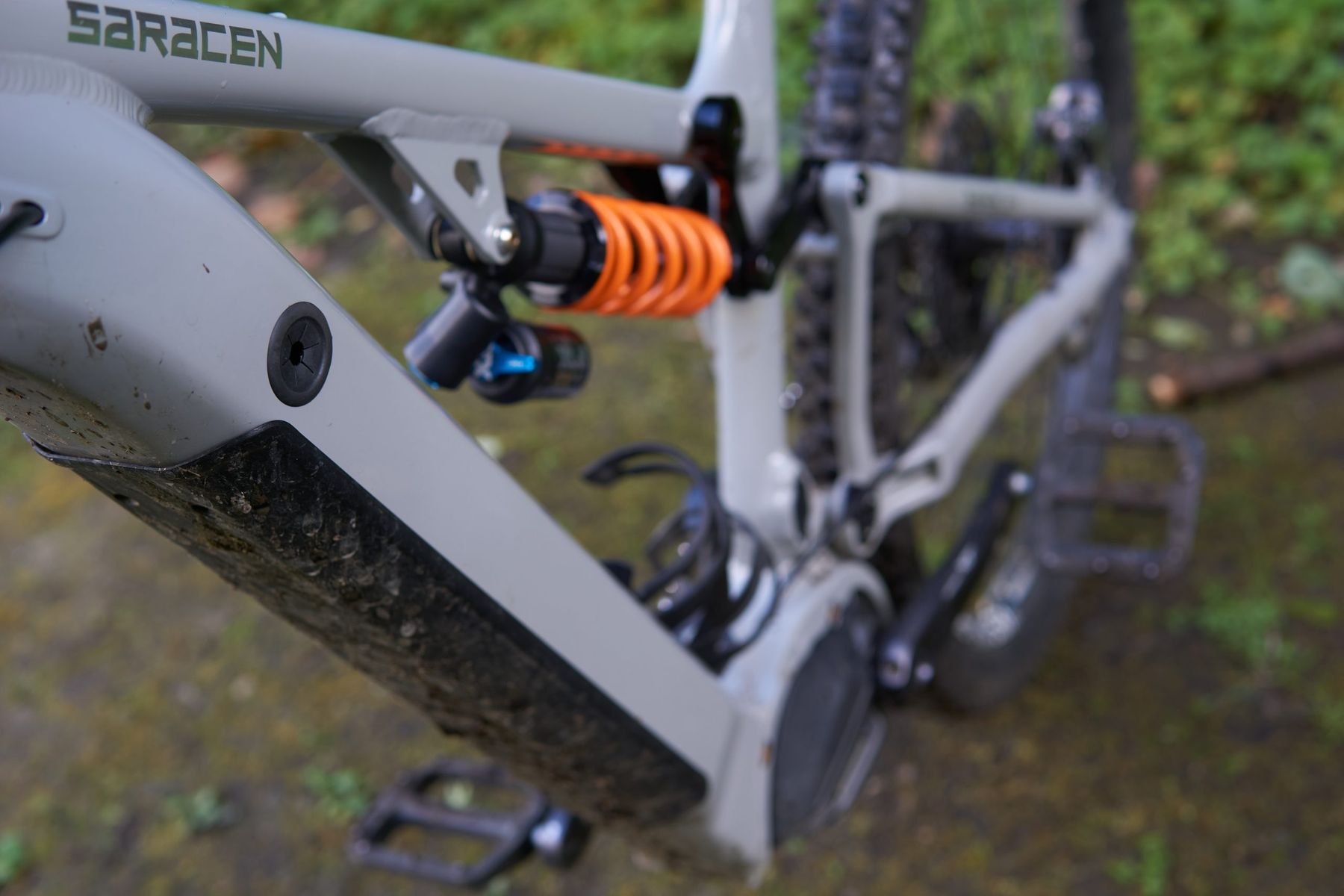
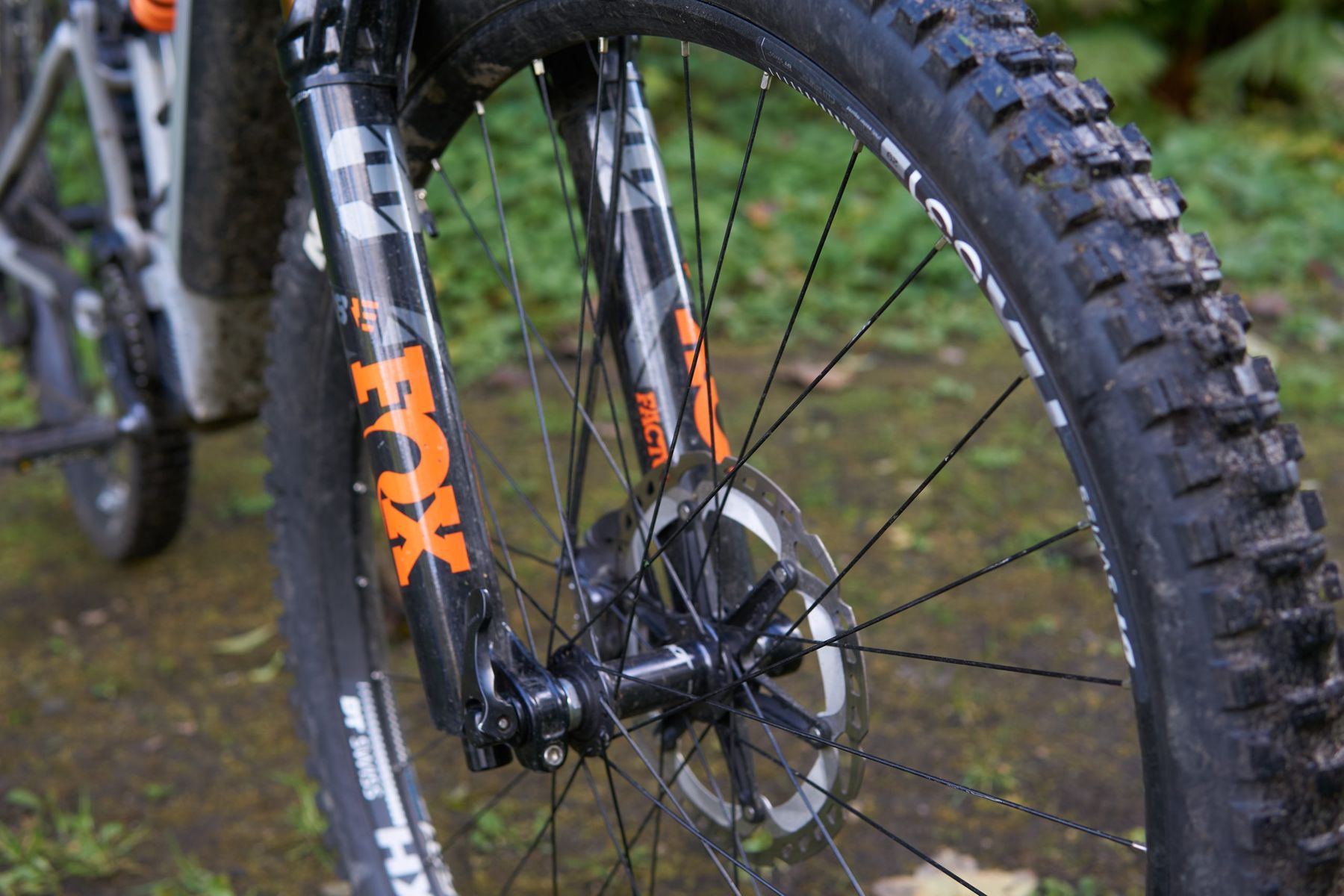
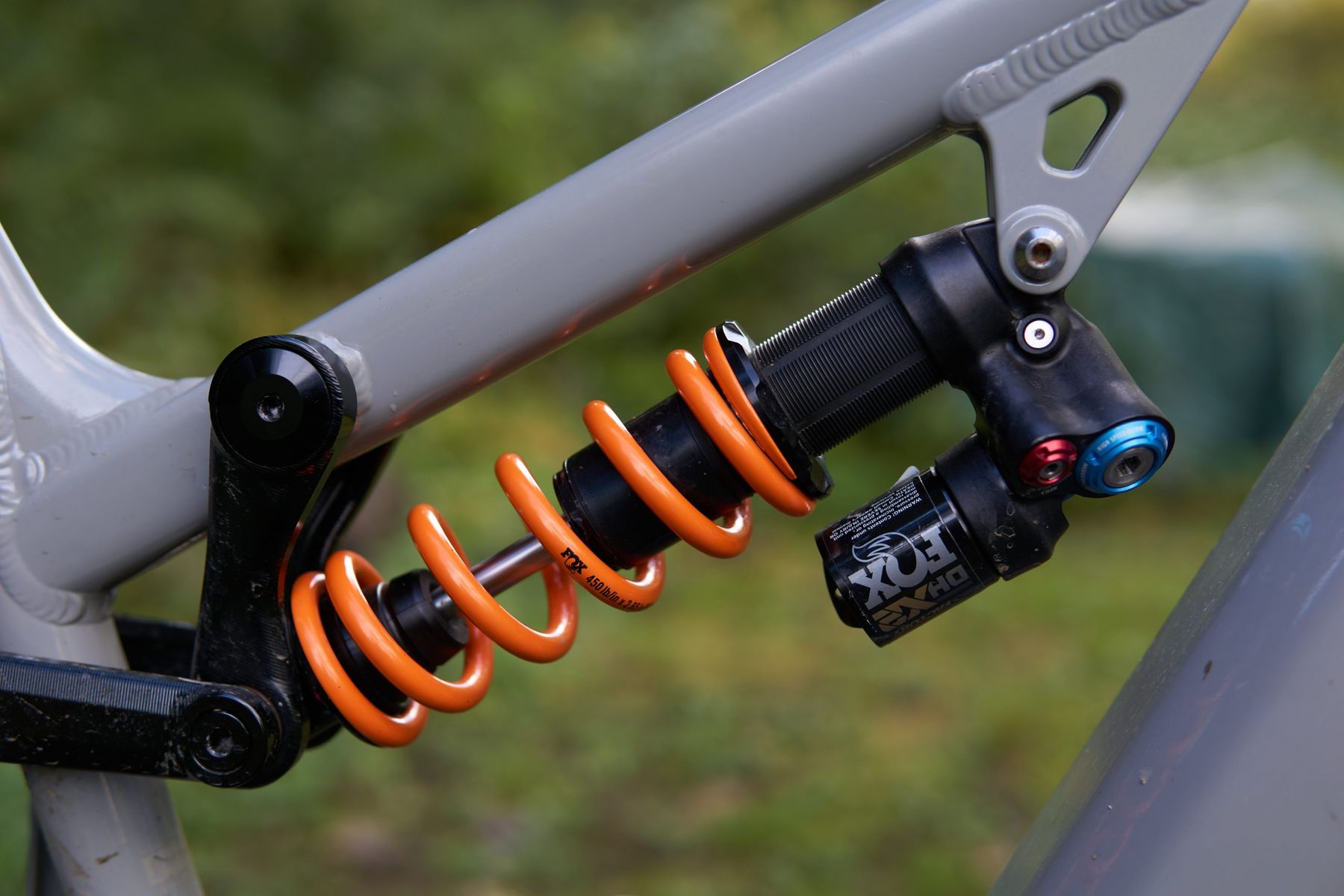

So it’s a really nice bike, but the suspension/cockpit isn’t forgiving, the hubs aren’t up to scratch, it’s noisy and the dropper remote doesn’t work and it’s got the wrong tyres? Apart from that it’s great.
They still look pretty got thought and might be on my list, but why in 2021 do companies still spec these bikes with 150mm droppers?
Zerocool, this particular one had a few issues but that didn’t stop it being a really fun bike. I’ve never felt particularly comfortable reading reviews where the journalist slates a bike based on things like grips or tyres, which many riders will probably swap out anyway.
Anthony, I’ve got the base model which has the bigger E7000 motor and have cracked the brittle motor casing rolling over steep rocky steps. Did you have any issues with the lower profile EP8? I wish Saracen had included some protection in this vulnerable area.
Hi Dan, the cover plate on the EP8 is also brittle plastic and it did look a bit vulnerable. Some helitape might help protect it (or at least hold it together if the worst happened) but replacements are fairly cheap and I get the impression it’s intended as a sacrificial part.